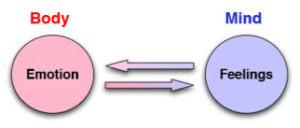Increasing Customer Satisfaction and Phone Sales Training with Rail Plus
Our Sales Training Workshops With Rail Plus
In January we had a fantastic two days of phone sales training with the sales team from Rail Plus. Rail Plus is the leading dedicated International Rail Specialist sales agency throughout Australia & New Zealand. Its head office is in Melbourne and they have a branch in Auckland.
Therefore over the course of two days, we trained two groups of 11 people in Melbourne and had 5 dial in through Skype. It was a great mixed group with lots of different ages and nationalities which brought in a variety of perspectives.
Sales Training
Rail Plus engaged Dynamo Selling for sales training as they were interested in improving their phone selling skills and growing customer satisfaction. Specifically, they were interested in learning how to build rapport effectively over the phone. The key areas of improvements we covered were:
- How to identify core needs of the customer quickly
- How to identify the customers pain points and address these
- How to communicate with the customer in the best way, and;
- Timing and pitching to implement techniques when they are most efficient.
The Results From Our Sales Training Workshops
Rail Plus are a fast growing company and each of the team members were eager to learn. Following the training, the team saw huge improvements in rapport building. They learnt the importance of asking great questions to get fantastic answers.
The team are much more efficient at understanding what the customers core needs are and how to get inside the customers mindset to help find them get the best solution to ensure all of their needs are met.
“Our team really enjoyed the sales training workshops from Dynamo Selling. They were able to make the content fun to ensure everyone stays engaged and retains the information. What’s more, the content was tailored specifically to suit the needs of our organisation. Thanks to Dynamo Selling for helping us increase our customer satisfaction”.
– Kewmaaz Muthalif, Director of Technology & Project Management, Rail Plus
If you are interested in getting some sales training for yourself or your team, please don’t hesitate to get in touch.




